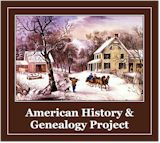Welcome
Welcome to Cabarrus Heritage! This website is part of the American History and Genealogy Project, an unincorporated not-for-profit network of independent websites devoted to history and genealogy. Cabarrus Heritage contains abstracts and transcriptions of original documents, historical photographs and narratives, and links to records and resources. If you have questions or need assistance, I would be happy to help. Thank you for visiting!
Volunteer
The AHGP relies on volunteers to grow and maintain our websites. There are many state and county sites that need coordinators. We also have positions for special projects including transcriber, editor, photographer and more. You can also submit genealogical or historical data for any of our sites. We appreciate your contributions!
History
Cabarrus County was formed in 1792, from Mecklenburg County, and was so named in compliment to Stephen Cabarrus, member from Chowan County, and Speaker of the House of Commons. It is situated in the south-western part of the State, and is bounded on the north by Rowan and Iredell, east by Stanly County, south by Union, and west by Mecklenburg. Source: Clarence E. Horton, Jr., "A Historical Perspective of Cabarrus County," Cabarrus County, North Carolina (https://www.cabarruscounty.us/government/Pages/Historical-Perspective.aspx : accessed 9 June 2017).
In 1732, according to established Cabarrus County tradition, a young Scots-Irishman named John Rodgers followed the old Warrior's Path from Pennsylvania through the Valley of the Shenandoah into the fertile lands of piedmont North Carolina and began building his cabin along Back Creek, near its junction with the aptly named Rocky River. He was soon joined by his countrymen. It is generally accepted that these Scotch-Irish settlers claimed the richer "black jack" lands of western and southern Cabarrus County, so that German settlers arriving in the 1740s amiably entered the eastern portion of the county, claiming lands on both sides of Dutch Buffalo Creek. To their west, along Cold Water Creek, lived a colony of Welsh-English. John H. Wheeler, Historical Sketches of North Carolina from 1584 to 1851 (Philadelphia, Pennsylvania: Lippincott, Grambo and Co., 1851), 63.
Updates
28 March 2020
- Biographical Sketches: Daniel Stanhope CALDWELL, Peter MEISENHEIMER
- Educational Records: University of North Carolina - Dialectic Society Members 1795-1841
- Marriage Announcements: Clay BLACKWELDER & Laura GOODMAN, George P. BOSTIC & Bertha BRYAN, William H. BUNDY & Alice SUTHER, Charles A. COOK & Bettie BLUME, David HONEYCUTT & Mary Elizabeth STIEFEL, William L. MISENHEIMER & Olive COOK, Samuel MONTGOMERY & Lizzie NORRIS, John SAPP & Sallie JENKINS, William F. TAYLOR & Eleanor M. ALLERMONG, Thomas WILSON & Bettie S. HARRIS
- Newspaper Articles: Accidents & Calamities - Charlie CRESS, John PRESSLY, Minnie RUSSELL
- Newspaper Articles: Criminal Reports: Martin M. FURR
- Newspaper Articles: Illness Accounts - C. D. MCDONALD Jr., Jake NEWELL, Tillman RUMPLE
- Obituaries & Death Notices: Ethel Springs BLACKWELDER, William BOST, Cary Ella FLOWE, John HOLDBROOKS, J. S. HOWELL, Sam W. NEWELL, Paul REINHARDT
TOP OF PAGE EMAIL ME SEARCH SITE
- Copyright © 2020 by Donna Sims Conner. All rights reserved.
- Every effort has been made to ensure this data is accurate and complete. However, errors do occur and I welcome any corrections or suggestions.
- Search engine provided by FreeFind.


